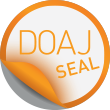Information on Conference Reports
Requirements for Reports and Reporters
The interdisciplinary and international dialogs FQS pursues are also expected of reports and reporters. Reporters have the charge to offer through their reports insights into a particular research field, as reflected in conference proceedings for the varied readership of FQS. Above all, reports should not only contain specialized information for sub-groups but the context in which a conference was held should be introduced and the questions and lines of development of a field of activity should be explicated in an understandable way, thereby outlining the specific contribution of the event. Therefore it is necessary to critically classify and evaluate the respective conference topics and contributions. Three functions shall be fulfilled by reports:
- Content depiction: Readers should be presented with a first outline of the conference's contents and the topics raised. Also the (explicit/implicit) claims made by conference participants should be illustrated.
- Evaluation: The report should also include a critical appreciation (of single contributions) of the event, thus giving readers an assessment of how successful a conference was in reaching its stated goals. At the same time—in order to unfold this critical appreciation—it is necessary to place the reported conference in a broader context. To do this effectively, the methodologies (e.g., ethnography, text analysis) employed by the presenters need to be adequately described and how they relate to issues within the field explained.
- Contextualization: Reporters should adequately introduce the research field represented by the conference and should provide some explication of the issues and arguments within that field. This should be represented by the achievements contained in the conference's contributions and the reporter's comments.
Beyond considering the subject background of the conference, describing central topics and evaluating them, it is requested that reporters provide references on conference information (abstracts, proceedings or the URL of the event) as well as information about a published volume of conference papers, future conferences on related topics, workshops, or other activities related to the reported conference, all contributing to an extensive impression of the event. Also, if possible, reporters may make use of other forms of presentation such as conference photographs, audio- or video-files of sessions, etc.
To be selected, a conference report must address the wide area of qualitative social research, and in particular it must deal with the theoretical and methodological bases of qualitative research. You will find further information in an Editorial Note.
Report forms
Reports on conferences, symposia, workshops and working-group-meetings, depending on the respective event, may take the form of
- Conference note
- Conference essay
- Discussing several events collectively
- Conference symposium
- Conference note
Conference notes should contain a meaningful outline of the research field as represented during the conference, framed by a short introduction of the connection between the conference and the research field under consideration and followed by an evaluation.
- Conference essay
Through conference essays, reporters should offer a deep consideration of the conference's contents. The research field should be briefly introduced and a description of how the conference did or did not contribute to the field. Conference essays will be understood to be independent contributions similar to articles, i.e., the "state of the art" is to be summarized for further discussion.
- Collective reports
Collective reports contain reports made by a reporter or a report team of two (or several) conferences considering the same or similar topic. The aim of the report is to make known how these events contribute to the research area under consideration in a comparative discussion. Collective reports are not a loose collection of single reports. Rather, collective reports should help to clarify the respective research field by synthesizing significant main lines and fields of discussion.
- Conference symposium
Conference symposia are reports of one or more event(s) by several reporters or report teams, who write individual brief reports. One author should write an introduction and a concluding comment. In addition, an on-line conference symposium could take place, e.g., a chat-conference with the organizer(s) of a conference.
Announcement of Conference Reports
Suggestions for reports can be submitted by interested authors. Please do not send a report without previous consultation as we would need to decide whether the proposed report overlaps with other reports and whether the event is likely to be interesting and relevant for the FQS readership.
Guidelines for Layout
We do not prescribe a range of minimum/maximum words allowed for a contribution, as the length of the report should depend on the respective event and the individual reporter's perspective.
For FQS Conferences follow the Submission Preparation Checklist, valid for any manuscripts submitted to FQS. In addition, reports should contain information on organizers, organizing institutions, conference title, and time and place of event.





